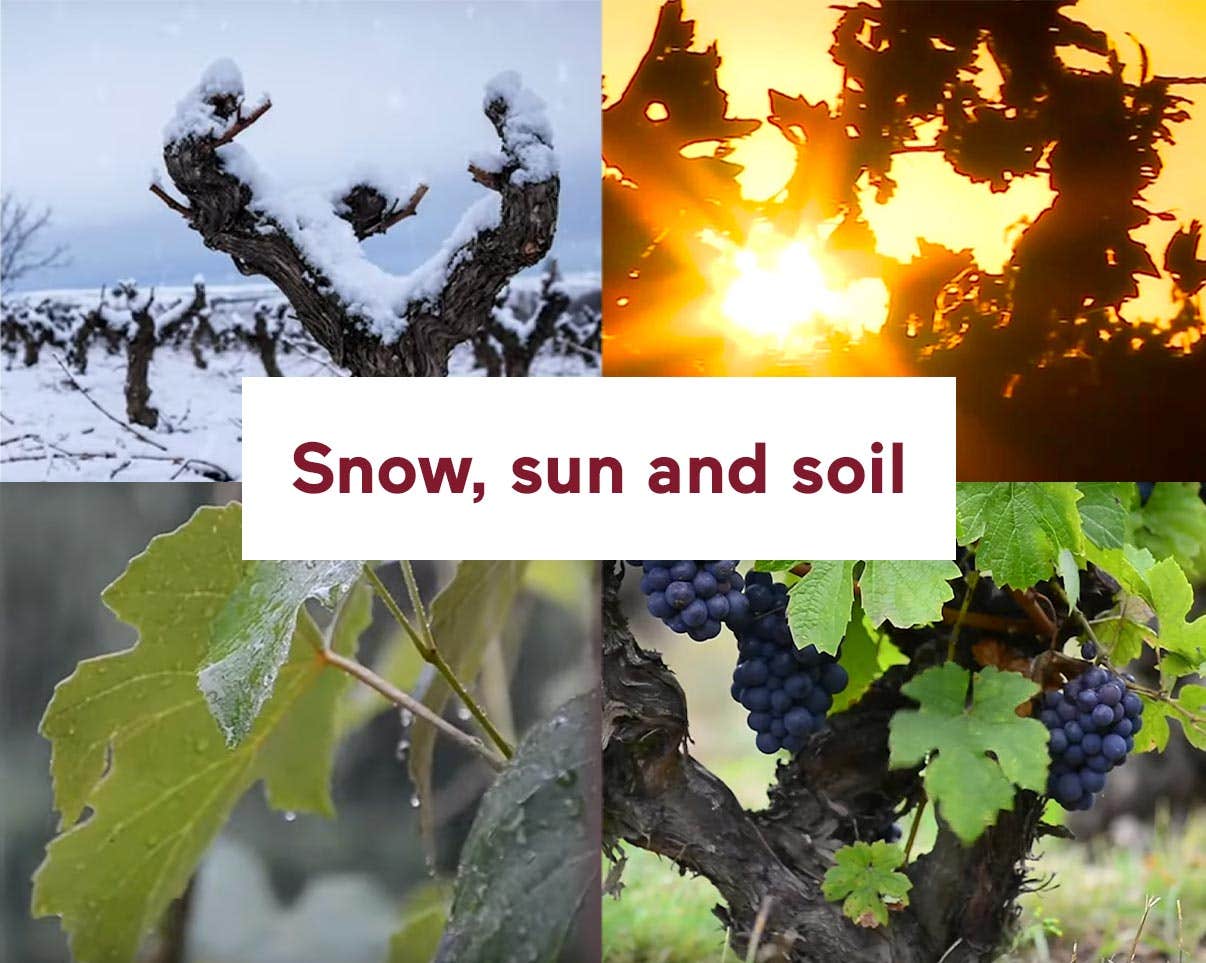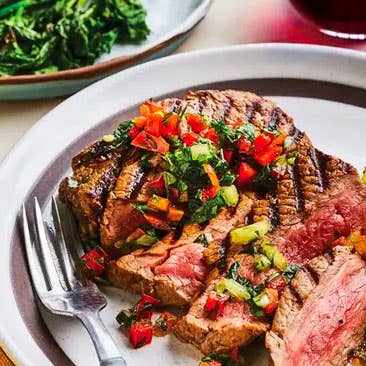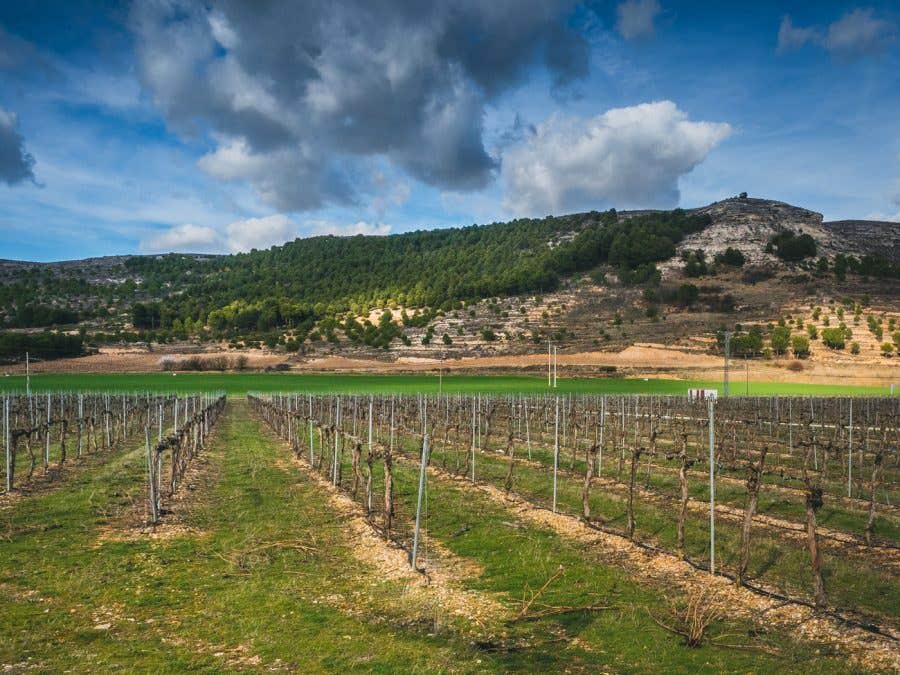Ribera del Duero
High altitudes and harsh growing conditions are everyday challenges for growers of the region. Yet it is precisely these aspects that create such unique and exceptional wines. Spotlight on a region that gets tested on the daily.



You may not think of snow when you think of Spain, but high elevations bring unexpected elements for the growers to deal with. At altitudes ranging from 720 to 1,100 meters, vineyards get their share of challenges in the Ribera del Duero: snow, sun, winds, rain, you name it. On the bright side, being perched up above means cooler nights and an expanded ripening period, translating into more colour, flavour and complexity.
Then there’s the soil. Diversity in the RDD is incredible, often even within a single vineyard. Silty sands, clay, limestone, and gravel will greatly impact the vines, and in turn the wines. A given grape on a designated plot can thus create intriguing variations in the glass, keeping enthusiasts on their toes.
Red red wine makes a lamb pairing so fine
Some wines are just designed for more specific foods. And when fall really rolls out, chances are you’ll be tempted to grab a more robust red, and braise a hearty, meaty dish. Sound good? Then let us suggest luscious red wines and some lamb recipes to get a leg up on that Thanksgiving menu.
DO and Tempranillo
Although wine production in the Ribera del Duero has been going on for centuries, its popularity is rather new, all things considered. A handful of estates made a name for themselves since the early 1900’s, but the DO classification attracted many investors after it was granted in 1982. Since then, there was a literal wine boom in the region. But because the designation guarantees a strict commitment to quality, production is held to a high standard. And you can taste it in every bottle.


Tempranillo is by far the most planted variety, taking up the vast majority of vineyards, sometimes under the local name Tinto Fino or Tinto del País. The region also cultivates Cabernet Sauvignon, Merlot, Malbec, Garnacha Tinta, and the white variety Albillo. But the king grape shines the brightest thanks to its exceptional adaptability and spectrum: from bright and velvety to concentrated and spicy.
Quebec’s wine critic Jean Aubry from Le Devoir once described the famous Tinto as having
" the velvetiness and perfume of a Pinot Noir, the nobleness and structure of a Cabernet Franc, and the muted softness of a Grenache"
Talk about irresistible!
Aging
and
aging
potential
Spain classifies its premium wines according to the time spent in oak barrels and in bottle. In fact, it is the only country to do so. When shopping for a Spanish wine, customers can look for the following mentions to make better choices. As a general rule, the higher the barrel-aging, the longer you can wait to drink the bottle. But that doesn’t mean Gran Reserva wines can’t be enjoyed right away. Ribera del Duero wines are the result of old-meets-new, anchored in tradition but produced using modern technologies. This ensures wines from the region are already beautifully complex but can evolve even more. It’ all about preference, and a little patience.
Classification
Crianza
Aged for a minimum of two years, six months of which are spent in the barrel for red wines, and eighteen months for white wines.
Reserva
A wine selected for its high quality. Aged for a minimum of three years, one year of which is spent in the barrel for red wines and six months for white wines.
Gran Reserva
The selection of the best vintages. Red wines are aged for a minimum of five years, two years of which are spent in the barrel. White wines are aged for four years, two years of which are spent in the barrel.
Tempranillo at the table
Traditional Spanish cuisine obviously makes for a fine match for Tinto del País, but Ribera del Duero reds can take flight at the table and accompany dishes from around the world. So long as they are mostly meat-based.
You may also like
-
Read more
Spanish reds have personality, in particular thanks to well-developed grape varieties
-
Read more
To understand the spirit of Spanish wine growers and their greatest wines, you have to keep two things in mind: the weather and the oak. Barrel aging has been a key part of the Spanish style for two centuries, with a balance that has changed a lot in the last thirty years.
-
Read more
Omnipresent in Spain, Tempranillo manifests a different personality reflecting its region of origin; so you may need to switch bottles.
 Access to SAQ Inspire personalized services and store inventories are unavailable at the moment.
Access to SAQ Inspire personalized services and store inventories are unavailable at the moment. Free in-store delivery with purchases of $75+ in an estimated 3 to 5 business days.
Free in-store delivery with purchases of $75+ in an estimated 3 to 5 business days. 

















